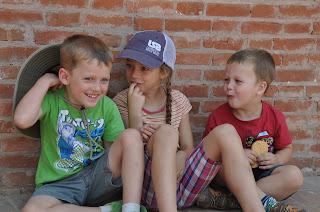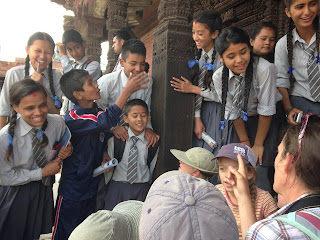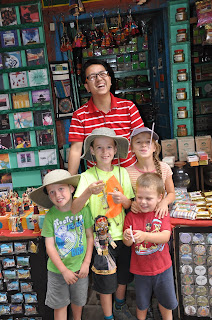When we began our journeys Nepal did not make the list of places we thought we might possibly visit. It wasn't until we acclimated to life away from home in Costa Rica, became seasoned travelers through Europe, and had positive experiences in a developing country like Morocco, that a place like Nepal could even become survivable for our family. Regardless of all this experience Nepal was hard. We chose to stay at a homestay to enhance our opportunity to get to know the local people and the Nepali way of life. It's like buying your own friends and knowledgeable tour guide in one handy homemade package. Babu and Bandana (Bella) Maharjan operate "the best homestay in Nepal." Tripadvisor even says so. Every morning they fed us breakfast and every night we had a delicious dinner of traditional Nepali food slightly altered for our kids eating palettes and our inability to handle the five chili level heat of traditional fare. Their home is located about thirty minutes outside of Kathmandu in a little village called Langol. Just behind the village are some steep hills. We took one day to hike up to some mountain villages in the hills.
The climb was steep, and it was hot! But the kids were
troopers. Babu, our guide, said we did about 8 km that day.
Our stamina is definitely increasing, the kids did awesome!
In the little village, there is no machinery and the only way to get to the village is by walking or motorbike because of the steep road. As we walked along the dirt road we could look out and see teams of women that till the fields by hand to prepare the soil for planting. It is hard work, but these women systematically, shoulder to shoulder, turn the soil to prepare for the planting. In other fields we watched groups harvesting wheat by hand. I felt like I had stepped back in time a thousand years.
We did find a man with a rototiller but he insisted that this field was too small to use a tiller on.
As we walked down the other side of the mountain, we observed more reminders of the earthquake. This is one of the local houses made of mud brick that collapsed in the earthquake. People now use cooked bricks which are much better than just sun baked mud.
As we walked through the nearest city for a little excursion we were invited into this woman's house. Here name was Rita. This is a picture of her yard outside of her apartment . Her apartment was one small room about 12 X 14 feet where she cooked her meals and lived with her two sons. Some people had as many as 8 people living in a little apartment like this and they all share the one bathroom on the the floor. This is the living conditions of so many of the people, and watching women hauling loads like the one below is common place.
Bella our host was so kind to cook for us throughout the two weeks we were there. The local food was so tasty but so hot. Mostly they eat daal bhat (lentils with rice) and lots of spices. They eat meat only once or twice a week. The most exciting part was that they don't use utensils. Everything is eaten with your hands and served in plates with high sides so that you can push food against the side and get a good hand on it.



























































